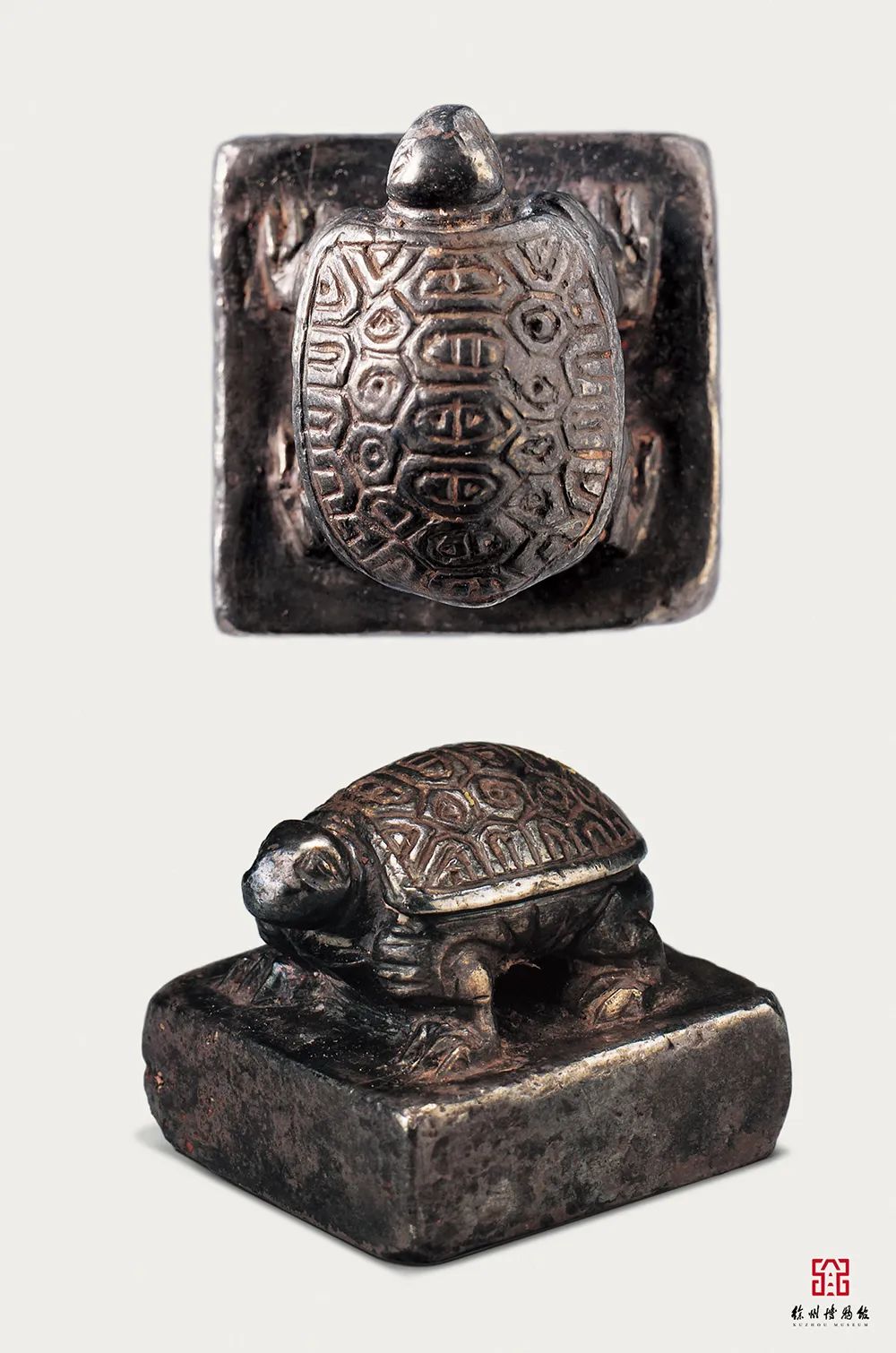Xuzhou Museum: Silver seal of Turtle button king of Chu Xiang -- Silver seal of liu Note Western Han Dynasty
Western Han · "Liu Note" silver seal
4b112bf3adb45ee5529e32ec84f41d63.jpg
Collection name: Silver seal of "Liu Note"
Historical period: Western Han Dynasty
Collection size: 1.7cm in height, 1cm in height and 2.1cm in length
Source: Tomb of King of Chu in Western Han Dynasty, Guishan, Xuzhou
Collection Unit: Xuzhou Museum
Cultural relics grade: National first-class cultural relics
The picture
The seals of the Han Dynasty were made of various materials, mostly metal materials, such as gold, silver and copper. They were cast by sand casting and wax loss, and the seals were made by casting and chiseling. Because the metal is hard and not easy to chisel, the printer often abandoned the details of the elaborate depiction, do not focus on the pursuit of the shape of the text, such works, although simple, but looks rough, interesting. The cast and printed words are round and pay attention to the clever and flexible composition, so the word complex but not messy, simple but not sparse, looks elegant and solemn.
Various types of seals have been unearthed in Xuzhou, such as copper seal on nose button, gold seal on turtle button and silver seal on turtle button. There is a special seal of great historical, artistic and scientific value. There are only two words on it, and it is not wrong to describe it with a thousand words. What kind of seal is it? So let's start with the twelve Kings of Chu in the Western Han Dynasty. The king of Chu not only separated the country during his lifetime, but also occupied the mountain after his death and buried the rare treasures in the tomb, so that the magnificent Tomb group of the Han and Chu Kings in Xuzhou was formed.

Guishan no. 2 western Han Tomb found a turtle button silver seal, carefully look at this small seal, its printing table is square, there is a small turtle on the button stand tall, back and belly are engraved with exquisite decoration, turtle eyes and nose carved delicate, abdomen hollow, unique shape, lifelike. On the seal surface, the characters "Liu Zhu" are copied by the most common typeface in the Western Han Dynasty. The characters have neat and rich lines, strong square and round twists, and the style is between seal script and official script, which is the typical style of seals in the Western Han Dynasty.
The seals of the Han Dynasty were not only guniu, but also varied in theme. In han Dynasty, the country was peaceful and the people were in peace, and the economy and culture flourished, which also provided fertile soil for the unique art of printing buttons in Our country. The seals of this period have simple and elegant shapes and vivid lines. And the seal on the button of different themes, not only for beautiful and production, different beast shaped button is on behalf of different rank. In most cases, the Emperor of the Han Dynasty used the jade seal tiger button, the queen's golden seal snake button, the king's golden seal camel button, the crown prince, the hou, the prime minister, Taiwei, three and around the generals with gold seal turtle button. Of course, there are exceptions, such as the King of Nanyue with gold seal dragon button, Empress Lu with jade seal tiger button.
0da2a6462830d992b42801e7581f1d33.jpg
The small seal identified the tomb's owner as Liu Zhu, the sixth king of Chu Xiang. Liu Zhu was a vassal of the Central Han Dynasty who was sealed in dongfang County. According to the system, the official seal should be gold seal of camel button, but what we found was his private seal and silver seal of turtle button. In ancient times, tortoise was often used as a symbol of auspiciousness. "The Book of Rites · Liyun" said, "As rare as tortoise dragon, it is called the four spirits", which also refers to outstanding talents. Therefore, the tortoise button made by Liu Zhu, king of Chu, may mean longevity. It is also an exquisite sculpture of han Dynasty in China, and its characters reflect the evolution of han culture.